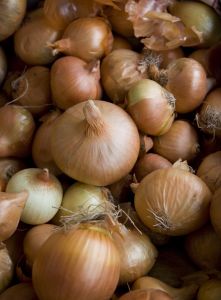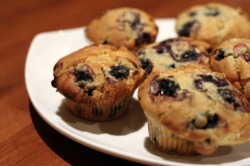For about 40 degrees, high humidity- Potatoes (5-8 months)
50 degrees, med-high humidity- Pumpkins (2-3 months), hard Winter Squash (banana squash, butternut, acorn squash, Hubbard, etc- 3-6 months)
The link has info on many more. One note- if a food stores best in high humidity, some ways to provide that are: (1) store the food in moist, not wet, sand, peatmoss, or sawdust. Keep in bins or boxes with loose-fitting lids, or cover loosely with a cloth or towel. (2) Store in a room with a bare cement or bare dirt floor. Sprinkle water on the floor every few days. (3) Store in a pile, on top of straw or similar, outside in your garden- cover with a layer of grass clippings, leaves, or straw. Cover it all with a 4-6" layer of dirt. (4) Mini root cellar- dig a big deep hole, drop in a food-grade plastic barrel, put a layer of grass clippings, leaves, or straw in the bottom, put in a layer or two of vegetables, another layer of clippings, repeat until full. Put a lid or board over the top, cover with a layer of clipping, then a 6" layer of dirt.
http://www.uga.edu/nchfp/how/store/wisc_vegetables.pdf
Happy storing!
-Rhonda
Bacon Potato Soup
6 cups potatoes, peeled and diced
5 cups water
2 cups chopped onions, about 2 medium
4 chicken bouillon cubes or 4 tsp. instant chicken bouillon granules can be substituted
6 slices bacon, cooked and crumbled
1 can (12 ounces) evaporated milk, or 1 1/2 c. half-and-half, or plain milk if that's what you have
2 cups grated cheddar cheese
Combine potatoes, water, onion, and bouillon cubes in greased 5 to 7 quart slow cooker. Cover and cook on low heat 6-8 hours or until potatoes are tender. OR simmer in a large covered saucepan about 30 minutes, until tender. Stir in crumbled bacon, milk, and grated cheese. Cover and cook an additional 20 minutes or until cheese is melted. Makes 10-12 servings.
Serve with hot biscuits and garnish soup with fresh chopped parsley.
Variation: Add 1/2 cup diced celery and 1/2 cup chopped carrots with potatoes at the beginning of cook time.


 RSS Feed
RSS Feed